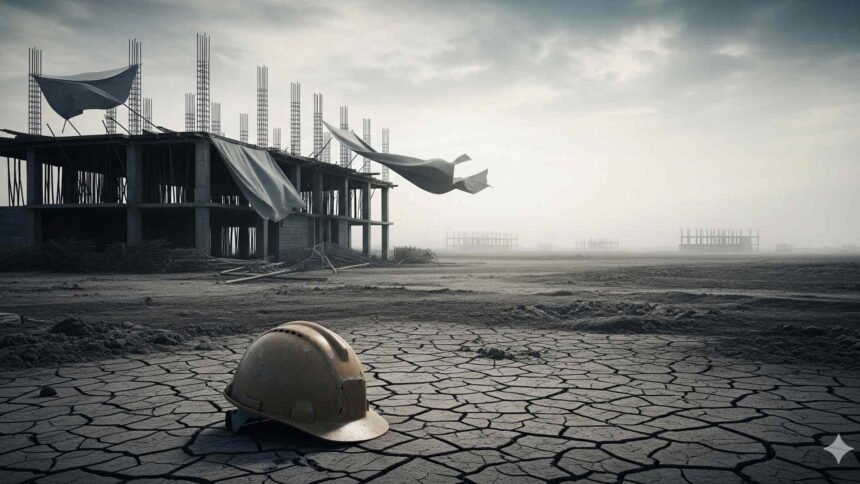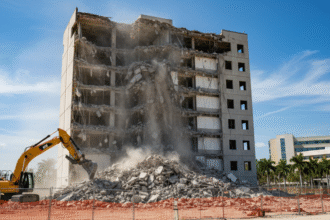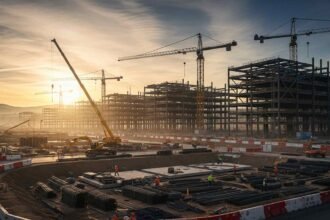Rising Costs and Supply Chain Woes Persist
Contractors across the construction industry face growing uncertainty as 2025 unfolds. Soaring material costs and persistent supply chain disruptions continue to challenge project timelines and budgets. Steel prices have surged by 15% in the past six months, while lumber costs remain volatile. Many contractors report delays in securing critical materials like concrete and electrical components. These issues force firms to rethink pricing strategies and project feasibility.
John Martinez, CEO of Horizon Builders, shared his concerns: “We’re seeing delays of up to three months for key supplies. It’s hard to give clients firm timelines when we can’t predict deliveries.” His sentiment echoes across the industry, where 68% of contractors surveyed by the National Construction Association reported supply chain issues as their top challenge in 2025.
Labor Shortages Add Pressure
A shrinking workforce compounds the industry’s troubles. Skilled labor shortages remain a critical hurdle, with many contractors struggling to fill roles for electricians, carpenters, and heavy equipment operators. The U.S. Bureau of Labor Statistics projects a 10% shortfall in construction workers by 2027, driven by an aging workforce and fewer young workers entering the trade.
Contractors actively seek solutions, such as offering higher wages and investing in training programs. However, these efforts strain budgets further. “We’ve increased pay by 12% this year to attract talent, but it’s eating into our margins,” said Sarah Thompson, owner of Thompson Construction. Some firms turn to automation and prefabrication to reduce reliance on manual labor, but these technologies require significant upfront investment.
Economic and Policy Uncertainty Looms
Fluctuating interest rates and unclear government policies add another layer of complexity. The Federal Reserve’s recent rate hikes to curb inflation have raised borrowing costs, impacting financing for large projects. Contractors worry that higher rates could slow demand for new construction, particularly in the residential sector. Meanwhile, proposed infrastructure spending bills remain stalled in Congress, leaving firms uncertain about future public projects.
“We’re hesitant to take on big projects without clarity on funding,” said Michael Lee, a contractor based in Texas. “If the infrastructure bill passes, it could be a game-changer, but right now, it’s all up in the air.” This uncertainty forces many firms to focus on smaller, privately funded projects to maintain cash flow.
Adapting to a Shifting Landscape
Despite the challenges, some contractors find opportunities in the uncertainty. Firms that specialize in sustainable construction report growing demand as clients prioritize energy-efficient buildings. The push for green certifications, like LEED, has spurred projects in retrofitting older structures. “Clients want buildings that cut energy costs and meet new regulations,” said Emily Chen, a contractor focused on sustainable projects. “It’s a bright spot in a tough market.”
Technology also offers a lifeline. Contractors increasingly adopt digital tools like Building Information Modeling (BIM) to streamline project planning and reduce waste. Drones and AI-powered analytics help monitor job sites and improve efficiency. These innovations allow firms to stay competitive, even as costs rise.
Looking Ahead with Cautious Optimism
Contractors remain cautiously optimistic about the future. While 2025 presents significant hurdles, many believe the industry’s resilience will carry it through. The National Construction Association predicts modest growth of 3% in the sector, driven by demand for healthcare facilities and renewable energy projects. However, success depends on navigating the current uncertainties.
“We’ve been through tough times before,” said John Martinez. “It’s about staying flexible and planning for the unexpected.” Contractors who adapt to rising costs, embrace new technologies, and diversify their project portfolios are likely to weather the storm.
As the industry grapples with these challenges, one thing is clear: uncertainty will continue to shape contractors’ strategies. Firms that proactively address supply chain issues, labor shortages, and economic shifts stand the best chance of thriving in this unpredictable market.









